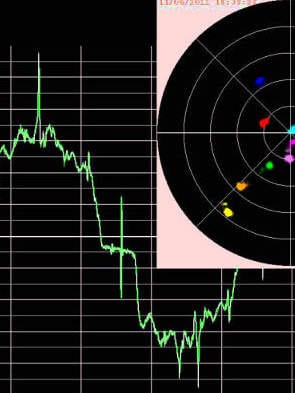IEEE-Madison Section Meeting Reminder

Upcoming Meeting Notice
January Meeting: "Challenges & Solutions in IoT End-Point Security"
- Topic: Challenges & Solutions in IoT End-Point Security:
A Case for Implantable Medical IoT - Joint IEEE-Student Branch/EMB18 Chapter Professional Meeting
- Date: Thursday, January 25th at 4:45 PM
- Dinner: Pizza and a Drink
- Fee: Members: $5, Guests: $5, Students Free
- Location:
Engineering Hall, Room: EH2535
1415 Engineering Drive
Madison, WI - Please Register at the IEEE-Madison event page.
- Non-member guests are always welcome.
Talk: Implantable medical IoT devices are used for monitoring, diagnosis, and therapy of an ever-increasing range of medical conditions, leading to improved quality of life and outcomes for patients. Advances in the use of implantable medical IoT devices have been accompanied, and in great part enabled, by increases in their functional complexity, wireless connectivity to allow for post-deployment monitoring, and programmability to allow therapy to be tuned to the evolving needs of each patient. These factors have also led to a rapid growth in concerns about security and reliability of implantable medical IoT devices, as underscored by recent trends in warnings and recalls of these devices due to failures, and a series of successful attacks on them demonstrated by academic researchers and the hacker community. The unique usage models of implantable medical IoT devices, and the need to provide very high levels of security and reliability under very stringent resource constraints, set them apart from other classes of computing platforms.
In this presentation, Dr. Kim will present the security and reliability challenges faced by designers of implantable medical IoT devices, and two techniques for improving the security and reliability are introduced. First, a zero-power contactless signal probing technique is introduced. Long-term signal monitoring for continuous physiological data collection and device status monitoring for improved reliability is enabled by inductively coupled circuits with no active power consumption. Second, a vibration-based physically secure communication technique is presented. Mechanical vibration has a short transmission range and is highly perceptible, and thus it is suitable as an auxiliary channel for exchanging a cryptographic key to establish a secure wireless channel.
- Entrepreneurs and Consultants Network Meeting
- Professional Meeting
- Date: Thursday, February 8th at 11:30 AM
- Fee: Free
- Location:
Sector67
2100 Winnebago Street
Madison, WI - Snacks and Drinks are available at Sector67
- Please Register at the IEEE-Madison event page.
- Non-member guests are always welcome.
Event: Be prepared to give give a brief introduction to what you do ("Elevator Speech"). This is your opportunity to discuss your company, or your consulting expertise.
- Speakers: Eric Sonju/Duane Craig of Power Systems Engineering, Inc.
- Professional Meeting
- Date: Thursday, February 22nd at 5:00 PM
- Fee: FreeMembers $5, Guests $10, Students FREE
- Location:
MG&E
623 Railway Street
Madison, WI 53703 - Pizza and a drink will be served
- Please Register at the IEEE-Madison event page.
- Non-member guests are always welcome.
Abstract: Power electronic devices are commonplace and increasing in number in commercial and industrial facilities as well as the grid. Power electronics provide electrical device control and modulation through voltage and frequency manipulation as well as many other functions. Utilities across the country are concerned about power quality as it effects them as well as their customers.
Power electronics are found in transformers, invertors, variable frequency drives, ballasts, drivers, power supplies, LED lamps, computers, programmable logic controllers and others. However, as power electronic devices multiply so does the occurrence and magnitude of harmonic distortion in the electrical distribution system. Excessive harmonic distortion can lead to unresponsive equipment, and electronic equipment damage. This talk will address power quality issues and harmonic distortion in facilities:
1. What is good and bad power quality?
2. Fundamentals of creating and avoiding power quality issues
3. What are harmonics?
4. How are power electronics associated with harmonics?
5. Consequences of harmonics
6. Harmonic distortion levels and thresholds
7. Mitigative and corrective measures
Biography: Eric Sonju, President -- Erik earned a BS degree in Electrical Engineering from North Dakota State University at Fargo, North Dakota with an emphasis in power systems. He has over 20 years of experience in the power industry, with the majority of those years providing professional engineering consulting services to electric utilities and private industry throughout the United States and Canada. His expertise includes engineering studies, design and business strategy matters in the electric power sector, including utility management, power delivery infrastructure, and technical applications. Erik is a licensed Professional Engineer in 20 states and in the Canadian province of Saskatchewan.



